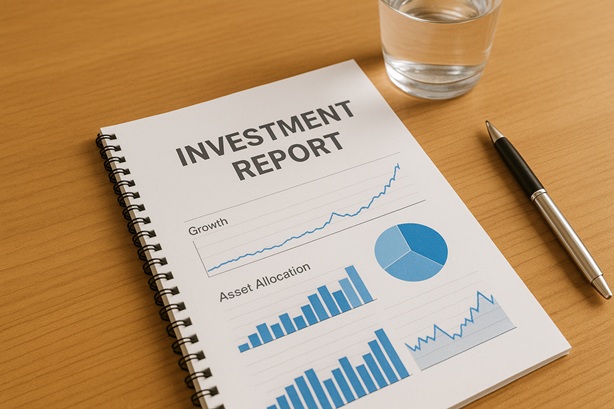
Fund reporting has long followed a familiar model: NAV updates, quarterly letters, and static tables. These formats fulfill formal requirements, but they may fall short of what today’s investors intuitively seek. Many want to understand how their capital has evolved inside the fund—across cycles, strategy shifts, and market stress. They’re not necessarily asking for more data, but rather for context that reflects their own trajectory.
This invites reflection: could reporting shift from passive delivery to active insight? Could it serve not only compliance, but also clarity and connection? Instead of reimagining reporting as a disruption, perhaps it's more useful to explore it as an extension of the investment experience itself.
Most fund managers remain focused on portfolio-level metrics. But investors increasingly seek personalized framing—something that positions their own journey within the broader evolution of the fund. The question is whether the traditional format still satisfies that expectation.
Reevaluating the form and function of investor communications may open new ways to strengthen relationships, especially during market stress or periods of uncertainty.
It’s not about replacing performance metrics—it’s about making them easier to understand and more meaningful to interpret.
Standard reports provide facts, but often without narrative. A quarterly statement can tell an investor where they are—but rarely how they got there, or what influenced the path. The investor sees a balance, perhaps a benchmark, but little else that resonates personally.
In that absence, something else takes its place: uncertainty. For some, that uncertainty may lead to disengagement. For others, it may spark premature action. Either way, the link between the fund and the investor becomes fragile—not for lack of performance, but for lack of visible continuity.
This raises questions: should reporting evolve to reflect individual investor paths? Could more thoughtful delivery strengthen the investor relationship, even when results are volatile? And what would it take to do so at scale, without overwhelming either the manager or the recipient?
Investors don't necessarily need every detail—but they do want to understand how the broader strategy intersects with their personal capital flow.
Exploring new ways of reporting may not just improve comprehension. It may support confidence—and resilience—during uncertain times.
When investors can see their own entry points, contributions, and value evolution—positioned within the broader story of the fund—reporting gains new relevance. It no longer simply shows an outcome; it offers a visual, structured map of the journey.
This personalized framing may help investors better contextualize performance, especially in turbulent periods. If a loss is shown not as an isolated number but as part of a longer pattern, supported by strategy and decision markers, the emotional response may shift from concern to comprehension.
Rather than replacing existing reports, dashboards could act as a companion layer—bridging the fund’s strategic timeline with the investor’s individual trajectory. The more clearly that connection is drawn, the more informed the client becomes. And with better information, trust tends to follow.
For fund managers, this means an opportunity to transform something routine into something relational—without altering the fund’s core structure or operations.
The right dashboard doesn’t replace judgment. It enhances it—both for the manager and the investor.
Offering transparency doesn’t require showing everything—it requires showing what matters, in a way that can be understood. Look-through exposure can offer investors a proportional view of sector, theme, or geographic concentrations, without simulating direct ownership.
The aim is not precision for its own sake, but functional clarity: what am I exposed to, and how has that changed? Done well, this kind of insight can reinforce the logic behind the strategy, and support client conversations grounded in facts, not assumptions.
The challenge, of course, is to balance signal and noise. Overly detailed breakdowns can confuse more than they clarify. But structured visualizations—tailored to the investor’s perspective—may open new ground between the generic PDF and the overly technical deep-dive.
Look-through dashboards can be modular, adaptable, and even interactive—showing relative exposure without compromising simplicity.
Informed investors don’t necessarily want more—they want to understand better. The way exposure is presented can shape both perception and retention.
Improving reporting isn't about embellishing data. It's about choosing to communicate in ways that support understanding. In markets where performance alone no longer differentiates, how managers convey information may carry strategic weight.
This includes the investor’s perception of competence, preparedness, and intentionality. A well-designed dashboard can suggest discipline. A clear narrative can imply control. And over time, both may contribute to client retention as much as return metrics.
Importantly, these solutions need not imply manual customization. With the right systems, they can scale—delivering investor-specific insights with minimal friction, allowing managers to focus on managing capital while elevating communication.
Investor engagement is no longer driven only by performance. The clarity with which performance is communicated is now part of the competitive equation.
Reporting is no longer post-trade commentary. It’s part of the value delivery process.
Personalized reporting may not be necessary for every fund, or every investor. But it may be increasingly expected in relationships where trust is built not just on performance, but on the ability to make complexity understandable.
At Pivolt, we explore ways to help fund managers present investor journeys with more clarity, relevance, and flexibility. From dynamic dashboards to optional look-through layers, our tools aim to support stronger conversations between managers and those who entrust them with capital.
Because while performance remains the core, the experience of understanding that performance—over time and in context—can be just as important.
And rethinking reporting, not as an obligation, but as an opportunity, may quietly shape the next standard in fund communication.
When transparency is personalized and contextualized, it becomes more than a report. It becomes part of the investor’s trust in the fund itself.